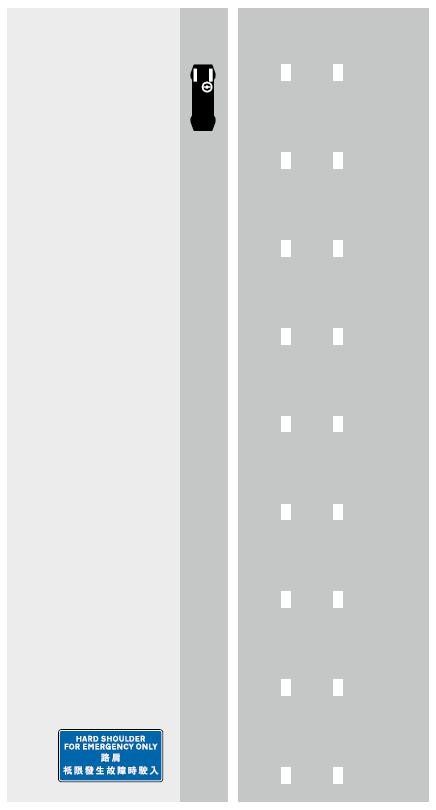Breakdowns
If your vehicle breaks down, think first of your own safety. Switch on your hazard warning lights immediately. Get your vehicle off the roadway if possible, such as onto a lay-by, hard shoulder or hard strip if available. Switch off the engine. Never forget the danger of passing traffic.
Leave your vehicle (by the left-hand doors) only if you are sure you and your passengers can safely get clear of the roadway and have a safe place to wait for help. Animals, if any, should be left inside the vehicle (leaving some gaps in window for ventilation). If in doubt, you and your passengers should remain in the vehicle and wear seat belts until the emergency services arrive. You should then inform the police by mobile phone as soon as possible.
If you have come out of your vehicle, do not
- stay on the roadway,
- stand in front/at the rear of your vehicle, or
- attempt to check or repair your vehicle on the roadway.
Ensure that you and your passengers have kept away from the danger of passing traffic, and that children are kept under control.
On some roads, usually expressways and trunk roads, you can identify your location by making reference to the nearest chainage marker (route number, travel direction and chainage). Do not delay in obtaining assistance and do not leave the vehicle unattended for a long period. Wait at roadside near the rear of your vehicle where you can see the traffic coming but keep well away from the carriageway and hard shoulder (behind crash barriers if available).
(See page 98 for rules on towing of vehicles.)
Breakdown inside tunnel
You must switch off the engine. Switch on the hazard warning lights immediately and seek help from the police. Stay in the car wearing seat belt and wait for assistance. Follow the instructions of tunnel officers or police officers.
If there is smoke coming out or in the event of a fire, you and your passengers should leave the vehicle and move to a safe location as soon as possible but do not forget to watch out for moving traffic. Walk away from the direction of smoke.
Hard shoulders
 |
 |
On some roads, usually expressways, a hard shoulder may be provided for emergency use. A traffic sign marks the beginning of a hard shoulder and a thick solid white line marks the edge. You must not drive, park or stop onto a hard shoulder except in an emergency. When rejoining the normal traffic lanes, build up your speed first on the hard shoulder and then look for a safe gap in the traffic.
|
|
